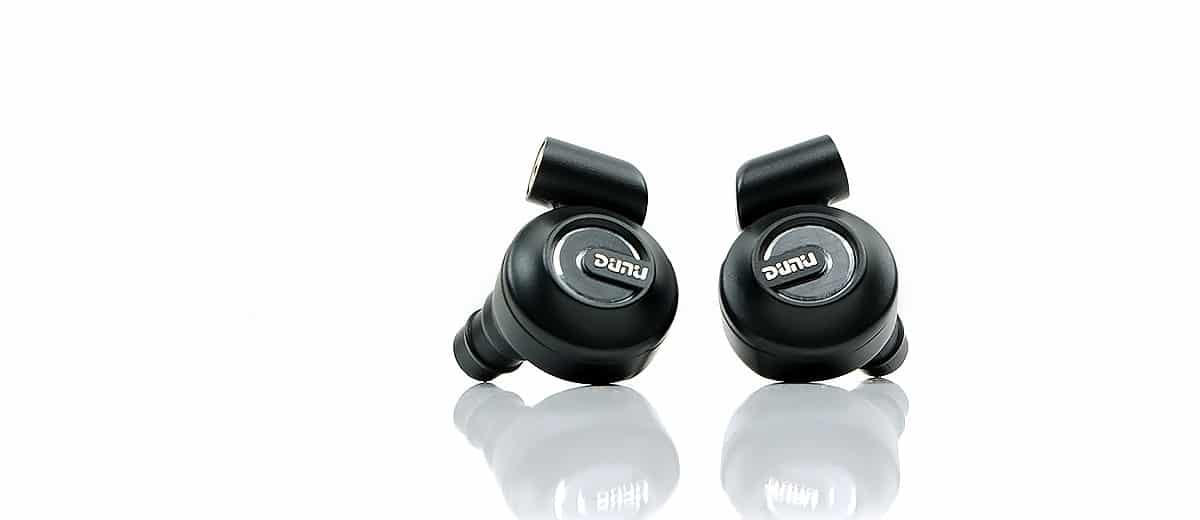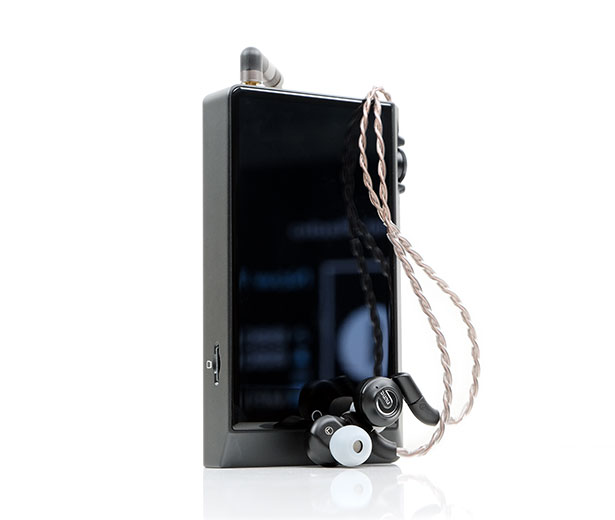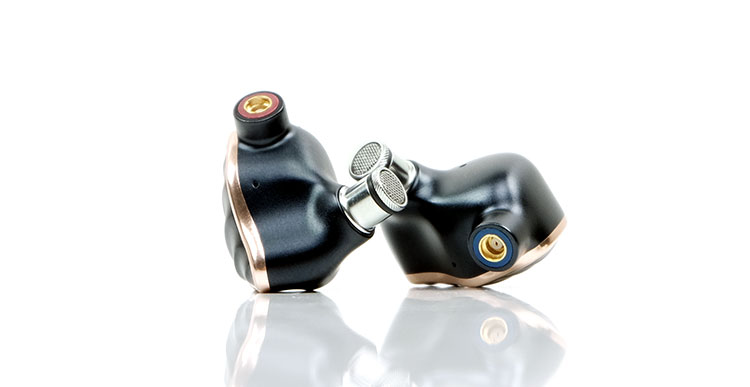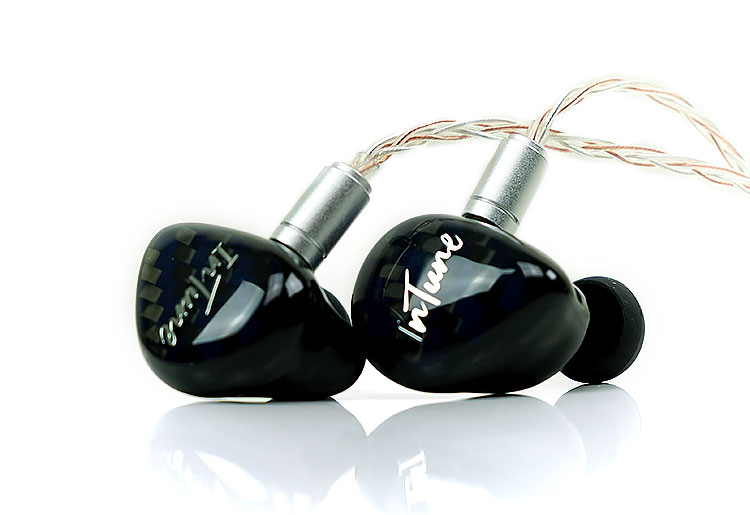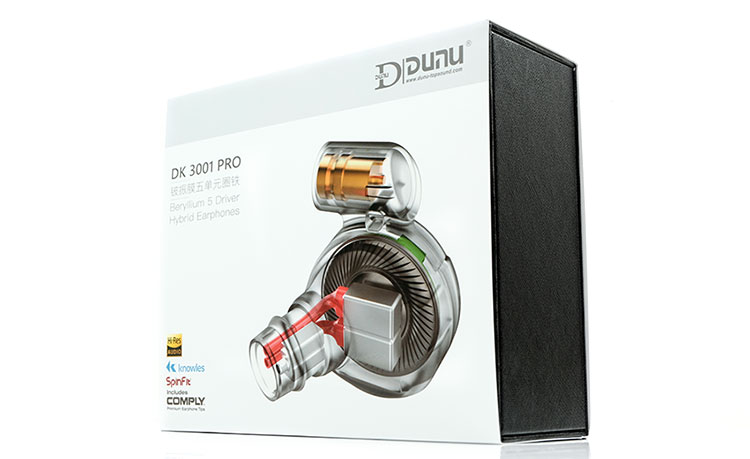Sound Impressions
Summary
The DK-3001 PRO is perhaps the most balanced and coherent mid-fi hybrid IEM I have heard to date. That is the key here because for the most part hybrids (DD/BA) tend to bring a certain signature to the table.
Normally, a deep and slowish dynamic driver low-end and that quicker drier BA timbre for the mids and highs. It makes for an exciting and fun signature with plenty of contrast but ultimately a contrast of timbre and technicalities. You can pick out the drivers relatively easily at times.
Do not confuse the DK-3001 PRO balanced or coherent with sterile or analytical, however. There is enough warmth in the low-end and a pleasantly tuned treble to keep the DK-3001 PRO on the pleasingly natural side of neutral. Rather, it does not have the richness and power that the DK-4001 has. So in context, this is a more linear and neutral tuning than its bigger sibling.
However, I think that restrained tuning of the DK-3001 PRO is all the better as a result. The low-end reaches deep but has a lightish touch and a good turn of pace for a dynamic driver and not as sluggish as you might think. The mids resist sounding dry or thinned out with good but not overly forward vocal positioning, both male and female.
Treble is the clever bit for me. It has some reach, a little lift right at the top for headroom but it is not forced nor is there anything terribly peaky in the lower-treble either pushing down onto the percussion. The resulting timbre throughout are very natural to my ear with excellent control and nothing exaggerated. You could argue that sounds a touch boring but for me, a hybrid this coherent and finely balanced is a rare breed indeed.
Staging
The DK-3001 PRO has excellent width and good height though depth might not be on par with some of the heavier hitting dynamic driver hybrid tuning’s out there.
Then again, the emphasis here is delivering something very coherent and linear so enhanced depth could deliver a slight disconnect if DUNU really let rip on that 13mm driver bass performance. If you are coming from the FiiO FH7 the quantity and reach are not too dissimilar though I find the DK-3001 PRO to have the slightly better layering so it sounds a bit more spacious.
Instrumental positioning is quite neutral through the rest of the range with a minor lift around 1-3k but nothing as forward as the FH7. Instruments tuck in slightly behind and out wide and do not lack presence due to that relatively smooth bass top mids transition.
Bass
How you receive and react to the bass response of the DK-3001 depends a bit on experience and expectation. One might think a 13mm dynamic driver would chuck out tons of coloration and smash something like the ultra-V shaped heavy-hitting Polaris 2 out of the park. That is not the case here with the DK-3001 PRO. This is a very linear and controlled low-end with a lighter than expected overtone.
Whilst the timbre is still a dynamic driver DUNU seems to have done an admirable job of reducing the worst excesses of dynamic drivers. That means it is fairly quick and tight sounding, very nicely layered and does not overpower the lower-mids with what I would describe as a very smooth transition from the upper bass into the lower-mids.
It still has more weight and extension than a BA driver but multi-BA driver arrays might run it a bit closer in terms of power and body. The emphasis here is very much about balance and cohesion so it is nowhere near as colored as the Polaris but tighter and smoother than the somewhat similar weight and presence of the FH7 dynamic driver.
Mids
Mids continue with the linear and balanced theme and stay mainly on the neutral side in terms of instrumental positioning. There is a slight bump around 1-2k so vocals are not dipped for me and have impressive clarity. However, unlike the FH7 or IT04 they do not leap out at you. Instead, they have a little more body and smoothness than either of those two competing monitors.
The general timbre is very natural to slightly euphoric and some source dependency will ultimately determine where the final presentation will sit. I tended to find it veered more to the organic and harmonically euphoric side with something like the HiBy R5 and much cleaner and more expansive sounding with the FiiO M11.
With most, if not all sources the DK-3001 PRO mids sounded impressively accurate with next to no sibilance or sharp overtones unless the recording already contained it. It does not have that extended upper-mids emphasis either that I tended to find on both the IT04 and FH7. You get less of that BA/DD timbral contrast so it does not sound as dry or bright.
Treble
The treble weighting and extension are excellent on the DK-3001 Pro. There is a little more emphasis than the DK-4001, especially around the 8-10k range so overall it is cleaner or more ethereal sounding.
However, it lacks the FH7 energy and odd-harmonic overtone so it is not as bright or hard-edges sounding. That definitely helps with the harmonic balance, especially for percussion and female vocals which sound smooth and clear and without any splashiness.
Again, the contrast is not huge so for some they might prefer the “excitement” the likes of the FH7 and the IT04 bring to their top-end performance which is definitely more forward. However, the DK-3001 PRO has a clear edge in terms of harmonic balance so, for me, higher-pitched instrumental timbre just sounds more effortless and less forced.
Matchability
Efficiency
The DK-3001 PRO is rated at 20Ω and 112dB SPL which is a bit of sweet spot for me in terms of efficiency versus noise. On all the sources we tested the DK-3001 PRO on we found no problems with background hiss or high noise floors such as the FiiO M11 balanced or the Cayin N6ii balanced.
Yet, at the same time, the DK-3001 PRO was relatively easy to drive and even when plugged into a Samsung Note 9 there was enough current to get to suitable volume levels. Now, it does need slightly more volume but roughly on par with the FH7.
Some might find the FiiO one slightly easier to drive but I think there might be some adjusting there for the forward treble of the FH7 which can create a perception of higher-volume. In fact, given the very balanced and linear tone of the DK-3001 Pro, you might find yourself giving it plenty of volume without even noticing.
Synergy
Synergy was an interesting one because this will be purely a preference thing for me and how you react to that relatively neutral to natural overtone of the DK-3001 Pro.
Personally, it can take decent power but doesn’t need it. For example, the HiBy R5 unbalanced sounded very organic and smooth with plenty of dynamic range. The additional thickness of the R5’s presentation and slightly stronger low-end than the FiiO M11 makes it a better match for me. Especially if you want to keep the DK-3001 PRO sounding relatively euphonic and smooth sounding. Of course, you can add some MSEB DSP for the final tweaks on the DK-3001 PRO signature so its not a fixed sound by any means.
What I did like about the FiiO M11 pairing was just how well it took advantage of the DK-3001 Pro’s staging width. It pulls everything back a bit compared to the R5 so it is not as intimate. Instead, it delivers some excellent instrumental separation and air with a tiny bit more emphasis on that top-end BA articulation. If you think there will be more sibilance, then nope. The DK-3001 PRO is surprisingly resistant to the M11’s less forgiving nature.
My favorite pairing was the iBasso DX160. It brought that expansiveness from the M11 but injected a slightly smoother and fuller sound into the mids and treble of the DK-3001 Pro. I also found it a little more resolving, especially for vocals on the DK-3001 Pro. I found myself being drawn to female vocals a lot more on the DX160 than the M11. My only caveat with this pairing is that without DSP its a very flat and neutral sound. Some might find that pairing on the boring sound.
Select Comparisons
FiiO FH7
$449.99
Technical
The FH7 is FiiO flagship universal hybrid monitor and very close in price to the DK-3001 Pro. The configuration of both has some similarities with both using a beryllium dynamic driver for the lows and a mix of balanced armature for the mids and highs.
However, on closer inspection, there are some differences. The first is the “amount’ of beryllium plating. The DK-3001 PRO driver is plated on both sides whereas, I believe, the FH7 is plated on just one side.
Second, for the mids and highs, the split is very slightly different. The DK-3001 PRO has 2 for the mids/highs and two for the super-highs. The FH7 has a midrange dual-driver DFK for the mids and the dual-driver SWFK-31736 as tweeters.
Build
Build-wise, the FH7 is the bigger and heavier of the two but has a little more of that custom universal contouring so it fits pretty good. The DK-3001 PRO is much lighter and smaller, and as a result, a little comfier in the ear. Both seal just as good as each other which is, on the whole, average given they are both vented shells. Tip selection is great on both IEMs, and both include SpinFits, foams, and silicone.
Both have good wire in their cables with the FH7 cable using am 8-core 157-strand Litz Monocrystalline SPC compared to the LYRE’s 4-core secondary fire refined high purity OCC copper wire. FiiO’s cable edges it slightly in core count and its translucent jacket has a nice softness to it also. However, the LYRE’s multi-jack connection system is unparalleled and really the genius of this cable. FiiO’s only comes in 3.5m TRS which is a slight disappointment.
Performance
The FH7 is rated at 16Ω and 111dB SPL compared to the DK-3001 PRO at 20Ω and 112dB SPL. Honestly, there is very little difference between the two in terms of dynamic range vs output power, current demand (volume) and background hiss, or noise.
If I had to give an edge in terms of volume it might be the FH7 but it can trick the mind because of its forward treble presence that gives you the impression it might be louder. I tested both on the Cayin N6ii, the new HiBy R3 Pro, Lotoo PAW Gold Touch and a Samsung Note 9. None of them had issues driving either IEMs and none of them delivered anything else but a black background.
Tuning
The key difference between these two monitors is the overall timbral coloration and how forward the upper mids and treble are on the FH7. I find the sub-bass extension and quantity to be roughly similar on both monitors but it is not really there that you will be drawn to. Nope, its the mids and treble.
The FH7 s noticeably brighter and more energetic with a much bigger upper mids elevation pushing vocals front and center. Percussion timbre is cleaner with slightly less body and the general level of sparkle and treble more noticeable. The DK-3001 PRO sounds the more linear of the two throughout.
Interestingly the upper treble of the DK-3001 PRO has a bit more extension and headroom but since its mids are more neutral and the lower-treble not as elevated it doesn’t sound as bright or aggressive. The DK-3001 PRO harmonic balance is thus a shade more natural for me with better sibilance control and a wetter percussion timbre. It is the more pleasing listen though doubtless, some might enjoy the energy and vivid vocal presence of the FH7.
iBasso IT04
$499
Technical
The IT04 is a quad driver universal monitor as opposed to the 5-driver of the DK-3001 Pro. The configuration is a 10mm dynamic driver with a multi-layered graphene diaphragm as opposed to a double-sided beryllium plated 13m DD inside the DK-3001 Pro.
The rest of the IT04 is made up of a single ED BA for the mids and a dual 30017 for the highs. The DK-3001 PRO has two BAs for the mids and highs and two tweeters for the super-highs.
Build
I have to hand it to iBasso, they are the kings of comfort with their custom universal heavily contoured acrylic T04 shell. The DK-3001 is more durable and smaller physically but the fit on the IT04 is to die for with better passive isolation despite both having dynamic driver venting.
The IT04 uses an 8-wire SPC and copper wire, (CB12) in a soft translucent jacket compared to the darker hue of the 4-wire LYRE’S secondary fire refined OCC. The core count belongs to iBasso but that connector system makes the LYRE much more adept for a wider range of systems. I say this despite the CB12 having a 2.5m TRRS and 3.5mm pigtail add-on. I find myself still using the LYRE cable more.
Performance
The IT04 is rated at 16Ω and 110dB compared to the DK-3001 PRO at 20Ω and 112dB SPL. In theory, the DK-3001 PRO should be a shade louder though the IT04 might be easier to drive.
In real-world testing with the same selection of sources as our FH7 comparison, I actually found the IT04 the slightly louder of the two at similar levels. This was done on the Cayin N6ii, HiBy R3 PRO and the Lotoo PAW Gold Touch.
Since the IT04 stock cable is balanced we did a short test on the Cayin N6ii just to see if the additional power of the N6ii’s balanced output would change their respective performances. It really has no effect if other than to emphasize that iBasso may well be a shade conservative in their SPL rating or the 4Ω driving difference in favor of the IT04 is decisive. Either way, both monitors are noise-free and fairly easy to drive, especially in balanced so it is largely irrelevant.
Tuning
I find these two to sound quite different. Yes, they have a ‘core hybrid’ synergy of sorts but the key difference is just how coherent the DK-3001 PRO sounds compared to the IT04.
Now, I really enjoy the IT04, it has some nice and deep low-end presence and a typical strong dynamic driver timbre. The DK-3001 PRO is more restrained in the low-end though it reaches just as deep. That works better for me because the transition into the mids-BA timbre is much smoother. You get less of a clash of timbre between the dynamic driver and the BA drivers with the DK-3001 Pro.
That more linear tone of the DK-3001 PRO really extends right up into the treble also. You do get an uptick with those two super tweeters around 8-10k but it is not as extended or elevated as the IT04 tuning. The IT04 has a bit of lower-treble suck out which thins out the higher-pitched instrumental timbre. Combined with the 8-10k peak the IT04 can sound more ethereal and lacking in texture compared to the smoother wetter DK-3001 PRO timbre.
You can argue, however, that the IT04 has a ton of bass/treble contrast that sounds exciting. Still, I prefer my notes to have a bit more weight. Overall, the DK-3001 PRO has a flatter bass but better body through the mids and treble and sounds less of a hybrid than the IT04.
Campfire Audio Polaris
$599
Technical
The Polaris is quite different. First, the configuration is a bit more simplistic in terms of driver count with a total of two drivers, a single 9.2mm Dynamic Driver with their Polarity Tuned Chamber and a single balanced armature driver with T.E.A.C tubeless technology.
The DK-3001 PRO uses a total of 5 drivers with a more precise crossover. CA, however, makes more use of acoustic engineering with the tubeless design and chamber structure of their dynamic driver. A different emphasis if you will. My only concern is the dynamic driver in the Polaris 2 is smaller and covering a broader range which colors the tuning a lot more and you can read about that further down.
Build
The build is classic Campfire with that Anodized shell but with a long nozzle so the comfort does not take a beating from the shell edges. I would say overall the Dk-3001 PRO might be the more “drop-resistant” of the two due to the anodized finish of the Polaris 2.
The fit is also a bit better on the DK-3001 PRO due to the smaller size and rounded finish. The Polaris 2 is excellent but you can feel the difference around the edges of your ear. Isolation is on par given both are venting dynamic drivers inside.
The cables on both are good with the Polaris sporting a 4-wire SPC Litz with the smoky jacket and matching black barrel finish and the 4-wire OCC copper wire. It is just that DUNU interchangeable connector system that really makes this cable stand out over the Polaris 2 standard 3.5mm fixed option.
Performance
The Polaris 2 is rated at 17Ω and 105dB SPL which is quite a bit lower on paper for efficiency in terms of current demand compared to the 20Ω and 112dB SPL. However, CA has always been known to work with sensitive drivers that respond very well with current and the Polaris is no different because you require a lot less volume to get to roughly the same loudness levels as the DK-3001 pro.
Overall, the Polaris 2 tested on the N6ii, HiBy R3 PRO and Lotoo’s PAW Gold Touch is easier to drive with stock cables. Both are also noise-free as you might expect given their moderate SPL ratings.
Tuning
Oh gosh, this comparison is like chalk and cheese. In fact, so much the difference I almost advise getting both because they actually complement each other. The Polaris 2 is a heavy bass-hitting V-shaped monster of an IEM but with a fairly forward upper mids section whereas the male vocals drop back in contrast.
The DK-3001 PRO low-end is much more controlled than the Polaris 2. It has a linear bass delivery with a slight elevation for some warmth but nothing as exaggerated as the Polaris 2. Neither does it cut deep into the lower mids so both male and female vocals are more neutral in positioning.
You do not get that closeness with female vocals that the Polaris 2 is very good at delivering but I do think the balance on the DK-3001 PRO is much better. I don’t think either company would complain about that as they are voiced for very different audiences and tastes.
Treble is a little more forward on the Polaris 2 but it has to be to provide the mandatory exciting bass contrast. You get a fine balance without it sounding brittle but it doesn’t quite convey the body and wetness of the DK-3001 PRO top-end. The DK-3001 PRO isn’t rolled-off by the way, it also has a little upper treble lift but it is not as lean sounding as the Polaris 2 top-end.
Our Verdict
DUNU has really ‘got it going’ with the DK-3001 Pro. Of all the mid-range hybrids this is the most balanced and coherent sounding I have heard to date. There is less of a timbral clash between dynamic and BA. You get less of a stark ‘contrasty’ flavor and a much more controlled approach from top to bottom.
Of course, those looking to ‘bump and grind’ might find the balance a bit too controlled and there are other options out there was more treble or more bass weight. Preference is always a big factor but on a technical level, I find the DK-3001 PRO to be more accurate, more nuanced and definitely a very refined and enjoyable listening experience.
DK-3001 PRO Specifications
- Impedance: 20Ω
- SPL: 112±2dB at 1kHz
- Frequency response: 5Hz-40kHz
- THD: <0.5% at 1kHz
- Cable length: 1.2m
- Net weight: 16g

